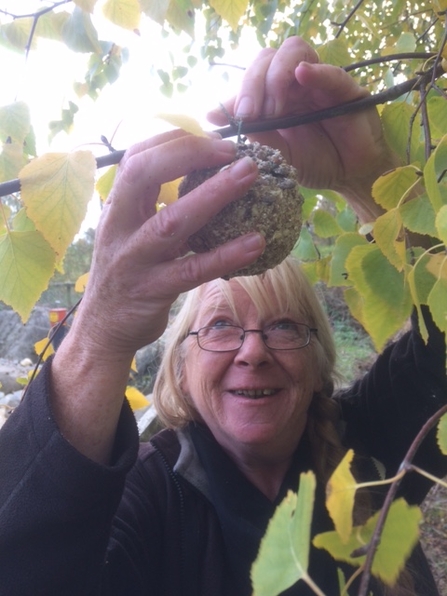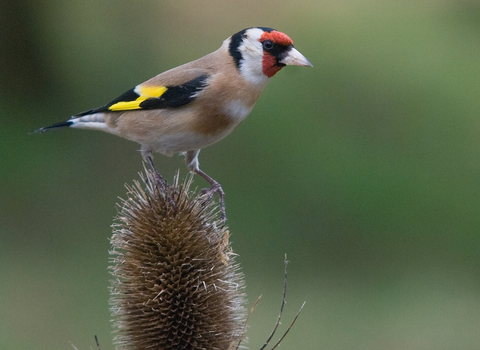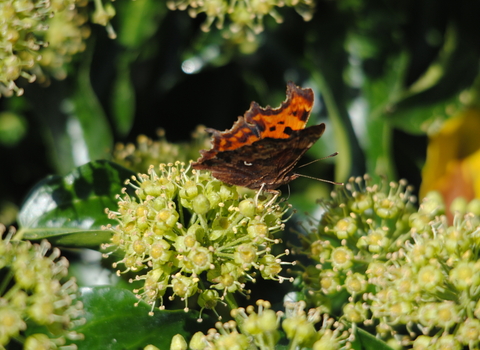Fallen leaves were always assiduously swept up and burned, wasting the nutrients they contain and releasing carbon into the atmosphere. If possible, it’s much better to let them decay naturally, feeding the fungi and micro-organisms in the soil and recycling their nutrients into the grass and trees.
Autumn wildlife gardening
(c) Bob Coyle
(c) Gemma de Gouveia
Enjoy the coloured carpet while you can. If there are areas which must be cleared – the path to the washing line or where the children play – then pile the leaves into heaps where they can decay naturally or collect them with the lawnmower and add them to the compost heap. Making your own leaf mould is a great (and free) way to feed your garden. Leaf piles will offer places for wildlife to hibernate too.
Don’t be too tidy with your flowerbeds either. Dead-heading everything removes valuable resources. Seed heads provide food for small birds and then shelter for insects over the cold months, go on adding structure to your garden, and can look beautiful when they’re frosted.
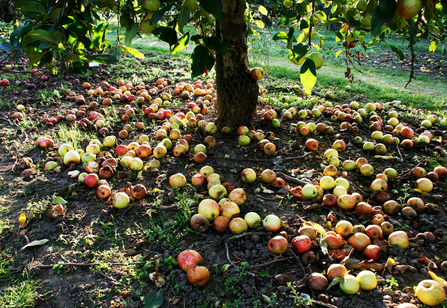
(c) Jim Higham
Windfall apples also provide a bounty. Blackbirds and thrushes will feast on them, and late butterflies such as commas, peacocks and red admirals will feed on the sugars in preparation for hibernation. As the apples ferment, you might find drunken butterflies needing to be walked home!
It’s worth collecting any apples you can’t use yourself and storing them in a cool dry place so that when frosts and snow arrive later in the season you can throw them out for the birds. Fieldfares and redwings, arriving now from Scandinavia, will appreciate the fruit when the hawthorn and holly berries in the hedges have been exhausted.
Fieldfare (c) Margaret Holland
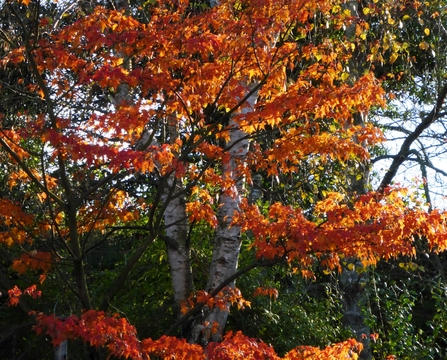
Autumn Acer
Autumn is a great time for planning. You might be inspired to add some more autumn colour to your garden – Japanese maples and small types of birch are ideal for smaller gardens.
Think about providing berries too. Rowans will give both leaf colour and abundant fruit to feed the birds. Late flowering herbaceous plants such as sedums (ice plants) and michaelmas daisies give a pollen boost to insects preparing to overwinter.
Admiral butterfly on Ivy
The much-maligned ivy is in flower at this time of year, providing masses of nectar and pollen, followed by fruit later in the season when it’s naturally in short supply. It gives well-insulated shelter for all sorts of creatures, and it won’t kill trees or destroy brickwork – an all-round winner in the wildlife garden.
Native wild flower bulbs such as bluebells, wild daffodils, snakeshead fritillaries and wild garlic should all be planted in late autumn to make a beautiful addition to the spring garden, and winter is the best time for planting bare-rooted trees.
Think ahead to the possibility of freezing weather before it comes – float a football in your garden pond to prevent its becoming totally frozen. By now you should have done any necessary removal of excess plants in the pond, and should avoid disturbing the bottom of the pond, where frogs may be hibernating.
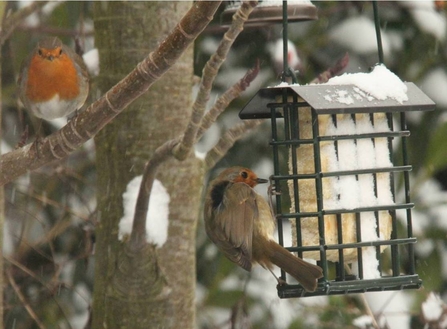
Another seasonal tradition was to start to put out food for the garden birds. Most of us now provide food year-round, but winter is still a hard time for wild birds so think about adding a couple more feeders, perhaps offering some different kinds of high-calorie food such as suet pellets or peanut butter, and when the cold weather strikes, make sure there is fresh water available for drinking and bathing.
Most of all, though, take time to enjoy your garden, to appreciate the changing beauties that the season offers. Bright berries on the hedges, dew-hung spiders’ webs, falling leaves in a shaft of sunlight, new winter migrants coming in – it’s all a big part of why we garden, and hopefully, why we garden with wildlife in mind.
